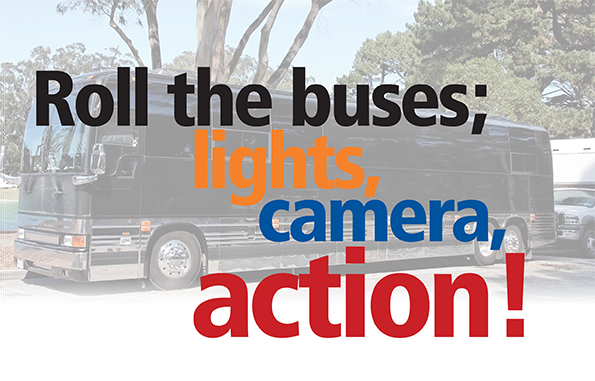
The Motorcoach Marketing Council offers tips on photography to help operators capture more bookings
When it comes to running a motorcoach company, photography hardly registers in the minds of operators. Nonetheless, for charter and tour consumers, a striking photograph can prove to be the deciding factor when choosing one company over another. Taking a decent picture seems easy enough – just point and shoot. Unfortunately, without giving thought to how take the photo, the coach sometimes doesn’t come across as luxurious. Instead, the image may then require a thousand words.
A good photograph begins with good equipment. This is not to say that the company needs to run out and spend thousands of dollars on a professional digital camera. However, if striking images of the fleet are part of the marketing plan, it would be best to keep a smartphone in pocket. These days, a quality digital camera is as inexpensive as it easy to use. With these pointers, taking a decent photo is almost point and shoot.
A good photo is all about lighting; a tough subject for novice photographers to get their heads around. The best advice is simple: wait for bright sunny days to photograph the fleet. The flash in the camera is typically good for only up to 15 feet. It certainly won’t light up the inside of the coach, front to back.
Framing and composition is next. The best shot often requires the assistance of the driver to help position the coach. The biggest surprise to novice photographers on a coach assignment is finding what they may have caught on film by accident.
In framing the shot, be aware of what is outside and around the vehicle, such as street poles and electrical wires. Position the bus in an enticing setting with an interesting background, a local landmark or a favorite destination. A rule of thumb is to take the photo from anywhere but in the yard or a parking lot. Curbside or on the street is best.
Shooting inside the cabin, be aware of the scene outside the window and be sure it belongs in the photo. Don’t be surprised or disappointed afterward if it makes the photo unusable.
In any setting, make the coach the focus. One more point: whether the coach is parked or appears to be moving, make sure there is a driver behind the wheel showing through the windshield. This is subtle, but for marketing purposes, the driver offers more impact than an image of an empty coach.
